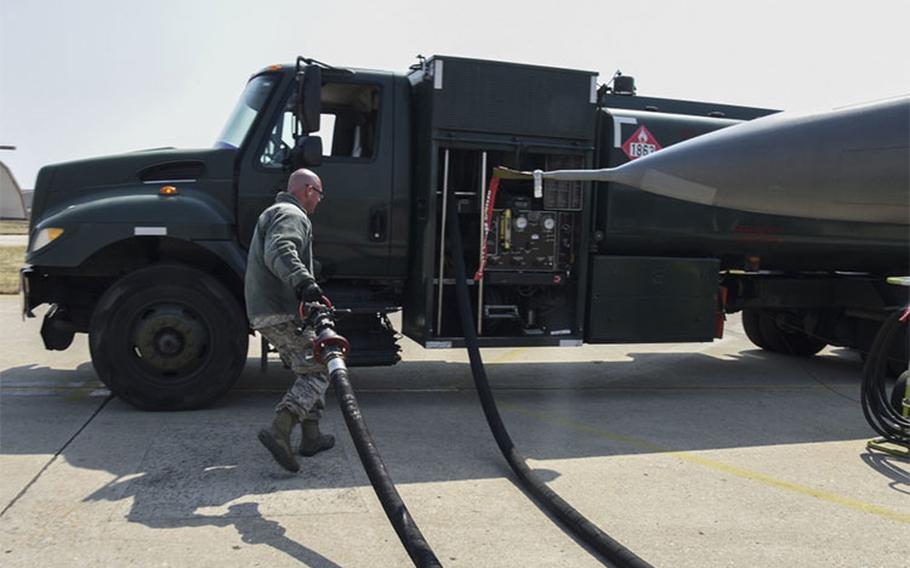Community News
8th LRS fuels the mission
8th Fighter Wing Public Affairs April 27, 2020

U.S. Air Force Tech. Sgt. Kevin Neiferd, 8th Logistics Readiness Squadron fuels distribution NCO in charge, puts away a hose after refueling an F-16 Fighting Falcon aircraft at Kunsan Air Base, Republic of Korea, April 3, 2020. The 8th LRS fuels management flight’s mission is to verify the quality of all fuel that comes in and out of the base to ensure the 8th Fighter Wing is always mission ready. (U.S. Air Force photo by Senior Airman Jessica Blair) ()
KUNSAN AIR BASE, Republic of Korea -- The 8th Logistics Readiness Squadron fuels management flight’s mission is to verify the quality of all fuel that comes in and out of the base to ensure the Wolf Pack is always mission ready.
The 8th LRS fuels management flight is made up of six sections. Cryogenics, which stores the liquid nitrogen and oxygen that the pilots use; distribution, which gets the fuel to the aircraft and hydrant systems; storage, which stores all of the fuel on base; laboratory, which tests and samples the fuel; the fuels control center, the focal point and brains behind the fuels distribution process; and lastly, the preventative maintenance team, that coordinates with refueling maintenance. All of these distinct sections work together to provide quality fuel and oxygen for the Wolf Pack’s F-16 Fighting Falcon aircraft.
“We exist to get fuel onto the aircraft,” said Staff Sgt. Jeffrey Laporte, 8th LRS fuels distribution NCO in charge. “We provide the life blood to the aircraft to get it in the air in order for pilots to accomplish their mission.”
The process begins when fuel arrives at Kunsan Air Base from refineries and is received at the fuels facilities. The fuel is then subject to a filtration process prior to being distributed to aircraft. Part of the filtration process in the lab includes using a “fizzy sample” which bonds to the water in jet fuel to prevent the water from freezing. Fuels laboratory technicians then verify that all of their tanks, refueling units and fuel assets are maintaining the overall quality of the fuel.
“As fuels laboratory professionals, our mission is to verify the quality of the fuel,” said Tech. Sgt. Quincy Moore, 8th LRS fuels laboratory NCO in charge. “We perform monthly sediment and water tests on our refueling units. It’s designed to grab the sample and verify the fuel’s quality.”
Fuels management flight is also responsible for storing and distributing of liquid oxygen in the cryogenics section, which is another crucial component of getting the pilot in the air. The oxygen they store and distributes allows pilots to breathe clean and fresh oxygen during flight and ultimately, safely reach high altitudes.
The 8th LRS fuels management flight plays a vital role in providing Wolf Pack aircraft with contaminant-free fuel and pilots with clean oxygen, at any given time, to ensure mission readiness.